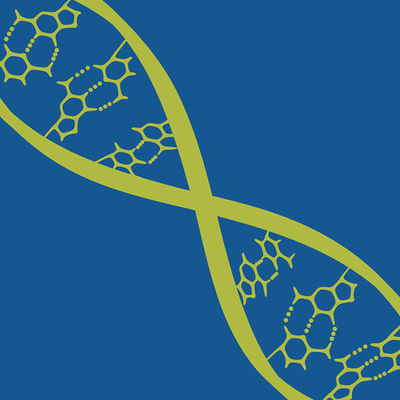预约演示
更新于:2025-05-07
ITIH4
更新于:2025-05-07
基本信息
别名 35 kDa inter-alpha-trypsin inhibitor heavy chain H4、70 kDa inter-alpha-trypsin inhibitor heavy chain H4、Gp120 + [13] |
简介 Type II acute-phase protein (APP) involved in inflammatory responses to trauma. May also play a role in liver development or regeneration. |
关联
20
项与 ITIH4 相关的药物作用机制 CD4调节剂 [+1] |
在研适应症 |
非在研适应症- |
最高研发阶段临床前 |
首次获批国家/地区- |
首次获批日期1800-01-20 |
靶点 |
作用机制 gp120抑制剂 |
在研适应症 |
非在研适应症- |
最高研发阶段临床前 |
首次获批国家/地区- |
首次获批日期1800-01-20 |
靶点 |
作用机制 gp120抑制剂 |
在研机构 |
原研机构 |
在研适应症 |
非在研适应症- |
最高研发阶段临床前 |
首次获批国家/地区- |
首次获批日期1800-01-20 |
100 项与 ITIH4 相关的临床结果
登录后查看更多信息
100 项与 ITIH4 相关的转化医学
登录后查看更多信息
0 项与 ITIH4 相关的专利(医药)
登录后查看更多信息
7,043
项与 ITIH4 相关的文献(医药)2025-12-01·Molecular Genetics and Genomics
Developing a genome-wide long sequence-specific tag for sex identification in spotted knifejaw (Oplegnathus punctatus)
Article
作者: Li, Jun ; Xiao, Zhizhong ; Xiao, Yongshuang ; Xu, Pingrui
2025-04-15·Journal of Virology
CD4+ T cells facilitate replication of primary HIV-1 strains in macrophages and formation of macrophage internal virus-containing compartments
Article
作者: Leyens, Johanna ; Vavouras Syrigos, Georgios ; Turk, Gabriela ; Victoria, Sabina ; Schindler, Michael ; Meckes, Lea Marie
2025-04-15·Journal of Virology
A gp41 HR2 residue modulates the susceptibility of HIV-1 envelope glycoproteins to small molecule inhibitors targeting gp120
Article
作者: Medjahed, Halima ; Tolbert, William D. ; Niu, Ling ; Ding, Shilei ; Benlarbi, Mehdi ; Chen, Hung-Ching ; Smith, Amos B. ; Prévost, Jérémie ; Bélanger, Étienne ; Pazgier, Marzena ; Chatterjee, Debashree ; Finzi, Andrés
64
项与 ITIH4 相关的新闻(医药)2025-04-10
摘要:本文围绕 HIV 的 mRNA 疫苗展开讨论。HIV/AIDS 仍是全球重大健康挑战,研发有效的 HIV 疫苗至关重要。mRNA 疫苗技术为其带来希望,文中阐述了 mRNA 疫苗的免疫治疗原理、作用机制和分类,介绍了相关的临床前和临床试验情况,分析了研发面临的挑战及可能的解决方案,并对未来进行了展望,指出尽管目前存在困难,但 mRNA 疫苗在 HIV 治疗上仍具有潜力,值得深入研究 。一、HIV 疫情现状与 mRNA 疫苗的希望艾滋病(AIDS)由人类免疫缺陷病毒(HIV)引起,自上世纪 80 年代被发现以来,一直是全球健康的重大威胁。尽管抗逆转录病毒疗法和暴露前预防措施取得了进展,但 HIV 感染率依然居高不下,研发有效的预防性疫苗迫在眉睫 。在新冠疫情期间,mRNA 疫苗展现出诸多优势,如安全性高、可大规模生产和适应性强等,这使得人们对利用 mRNA 技术研发 HIV 疫苗充满期待。二、mRNA 疫苗的作用机制与分类免疫治疗原理与作用机制:mRNA 疫苗的工作原理是将编码病毒抗原的 mRNA 包裹在脂质纳米颗粒(LNP)中,进入人体细胞后,细胞的翻译机制会根据 mRNA 的信息合成病毒蛋白,这些蛋白会被呈现在细胞表面的主要组织相容性复合体(MHC)上,免疫系统识别后会产生抗体,同时激活细胞介导的凋亡过程清除被感染的细胞,并形成记忆细胞,从而使人体获得对病毒的免疫力(mRNA 疫苗作用机制的图1,更直观地呈现这一过程 )。在此过程中,B 细胞免疫和 T 细胞免疫都发挥着重要作用,同时,先天免疫中的模式识别受体(PRRs)能识别 mRNA 上的病原体相关分子模式(PAMPs),启动一系列信号通路,促进炎症趋化因子和细胞因子的产生,进一步激活免疫系统 。疫苗分类:HIV 的 mRNA 疫苗主要有两种类型。非复制型(NRM)疫苗是传统的 mRNA 疫苗,由编码所需抗原的开放阅读框、两端的非翻译区和末端的聚腺苷酸尾组成 。自我扩增型(SAM)疫苗则能在细胞内自我复制,它包含来自正链 RNA 病毒的复制所需组件,相比非复制型疫苗,它只需较低剂量就能产生较强的免疫反应。三、HIV 疫苗的临床前与临床试验临床前试验:在临床前试验中,研究人员进行了多种尝试。比如,给人源化小鼠注射包裹在 LNP 中的编码人 IgG1 单克隆抗体(VRC01)的核苷修饰 mRNA,单剂量注射就能保护小鼠免受 HIV - 1 的攻击 。给新西兰白兔和恒河猴进行相关 mRNA 疫苗的皮内接种试验,也取得了一定成果,如恒河猴接种后产生了抗 gp120 IgG 反应,且低剂量的 SAM 疫苗被证明安全有效 。临床试验:目前针对 HIV 的 mRNA 疫苗临床试验相对较少(临床试验的表格1,呈现各试验的详细信息 )。像 BG 505 MD 39.3 gp151、eOD - GT8 60mer mRNA 疫苗等试验,旨在评估疫苗的免疫原性和安全性,但在诱导广泛中和抗体(bnAbs)方面存在不确定性,且多步骤免疫接种方案在实际实施中面临挑战 。iHIVARNA - 01 疫苗通过直接将 mRNA 注入淋巴结来激活树突状细胞,试验中部分参与者的 T 细胞反应有所改善,但它在实现病毒缓解方面效果不佳,且存在个体免疫反应差异大、冷链储存要求高等问题 。其他疫苗如基于树突状细胞的 AGS - 004 疫苗、MRK Ad5 HIV - 1 Gag/Pol/Nef 疫苗等,也都在有效性、安全性或生产实用性方面存在一定的局限性 。四、mRNA 疫苗研发面临的挑战与解决方案mRNA 疫苗的共性挑战:mRNA 疫苗在研发和应用过程中面临一些共同的挑战。首先,它需要超低温储存,这给运输和分发带来了极大困难,特别是在资源有限的地区 。其次,mRNA 本身不稳定,容易被体内的酶降解,需要用 LNP 包裹保护,但 LNP 可能引发免疫反应,导致发热、肌肉疼痛等不良反应,甚至在极少数情况下引发心肌炎 。此外,mRNA 疫苗的生产过程复杂且成本高昂,限制了其在低收入国家的可及性 。针对这些问题,研究人员正在努力设计更稳定的 mRNA 配方,使其能在较高温度下保存;优化 LNP 制剂,减少不良反应;探索更经济的生产方法,如无细胞 mRNA 合成技术等。HIV mRNA 疫苗面临的特殊挑战:研发 HIV 的 mRNA 疫苗还面临一些特殊的难题。HIV 的高突变率使得其表面蛋白不断变化,免疫系统难以识别,这给研发通用有效的疫苗带来了巨大阻碍 。目前的 mRNA 疫苗在诱导强大且持久的 T 细胞免疫方面存在困难,而 HIV 感染的控制需要强有力的 T 细胞反应 。另外,mRNA 疫苗的长期安全性和在免疫功能受损人群(如 HIV 感染者)中的适用性仍存在不确定性。为解决这些问题,科研人员聚焦于开发能诱导更强大、更具多样性免疫反应的疫苗,例如研究 bnAbs 和多表位疫苗设计;探索改进抗原设计、佐剂使用以及初免 - 加强免疫策略,将 mRNA 疫苗与其他疫苗平台(如病毒载体或蛋白疫苗)结合;开发冻干配方和热稳定的 mRNA 疫苗,以改善储存和分发问题;通过持续的临床试验和真实世界监测,评估疫苗的长期安全性和有效性 。五、mRNA 疫苗的有效性与未来展望从现代研究和新冠疫苗的应用来看,mRNA 疫苗在引发免疫反应方面具有一定的有效性。它能通过模拟病毒感染,激活人体的细胞免疫和体液免疫,在对抗细胞内感染方面发挥重要作用 。然而,由于 HIV 的复杂性,研发有效的 HIV mRNA 疫苗仍面临诸多挑战 。如果当前的 mRNA 疫苗研发未能成功治愈 HIV,研究人员将继续寻找创新的解决方案,例如结合 T 细胞疗法或 bnAbs 等不同治疗方法,探索基因编辑技术(如 CRISPR)来靶向隐藏的 HIV 病毒库 。即使无法实现完全治愈,这些研究也可能带来更好的预防性疫苗或长效治疗方法,改善 HIV 感染者的生活质量。六、总结自新冠疫情以来,mRNA 疫苗技术受到了广泛关注,其在 HIV 疫苗研发方面展现出了一定的潜力 。目前的初步临床研究带来了一些令人鼓舞的结果,但要开发出高效的 HIV mRNA 疫苗,仍需要进一步深入研究和探索 。尽管面临诸多挑战,mRNA 疫苗的灵活性和不断发展的技术为攻克 HIV/AIDS 难题带来了希望,持续的研究有望为全球抗击 HIV/AIDS 疫情提供更有效的手段 。识别微信二维码,添加生物制品圈小编,符合条件者即可加入生物制品微信群!请注明:姓名+研究方向!版权声明本公众号所有转载文章系出于传递更多信息之目的,且明确注明来源和作者,不希望被转载的媒体或个人可与我们联系(cbplib@163.com),我们将立即进行删除处理。所有文章仅代表作者观不本站。
信使RNA疫苗
2025-03-23
·奇点网
*仅供医学专业人士阅读参考
研究精神疾病的生物学机制,因为采样(大脑组织)困难,研究进展并不十分乐观。虽然可以利用外周循环蛋白等便于采样的样本进行研究,但是过去的研究往往通量较低,且容易受到环境因素干扰。
全基因组关联研究(GWAS)有助于在大规模样本中发现与精神疾病相关的遗传因素,并深入揭示疾病机制。孟德尔随机化(MR)可以利用基因的随机分配来探索因果关系,避免环境因素的干扰。
来自美国范斯坦医学研究所的研究团队,开展了迄今为止最大规模的双样本MR研究,讨论了对神经精神表型存在潜在因果影响蛋白质谱。
研究利用英国生物样本库和deCODE Genetics的血液蛋白质组学数据,共鉴定了91种与精神分裂症(SCZ)、双相情感障碍(BD)和重度抑郁症(MDD)和认知任务表现(CTP)高度相关的蛋白质。药物靶向富集分析显示,抗炎药物对于SCZ、金刚烷胺对于BD、视黄酸对于MDD可能具有治疗效果。
研究发表在《JAMA·精神病学》杂志上。
研究数据来自英国生物样本库药物蛋白质组学项目(UKB-PPP)和deCODE Genetics,分别包括34557名英国个体的2923种蛋白质,以及35559名冰岛个体的4719种蛋白质,对蛋白质通路、蛋白质-蛋白质相互作用(PPI)、基因-药物相互作用、药物靶向性、药物靶点富集等进行分析。
使用顺式蛋白质数量性状位点(cis-pQTLs)进行MR分析,鉴定出77种蛋白质可能与精神疾病易感性和CTP存在因果关联,其中SCZ 47种,BD 17种,MDD 7种,CTP 19种。
40%的蛋白质仅依赖单一的遗传变异位点与4种表型形成因果关系,多敏感性分析证实了结果的稳健性。UKB-PPP和deCODE队列使用了不同的蛋白质分析平台(Olink和SomaScan),结果具有中等一致性。
使用Trans-pQTL(与蛋白质表达相关的远距离遗传变异)进行MR分析,鉴定出14种可能与精神疾病易感性和CTP存在因果关系的蛋白质,其中SCZ 6种,BD 3种,MDD 1种,CTP 7种。
系统回顾发现,除了CTP相关的SYT17蛋白外,其余蛋白质均未被报道过。PI16蛋白在SCZ中表现出广泛的多效性,提示其遗传变异可能通过多条独立的生物途径影响SCZ及其他相关疾病。ITIH4和TWF2蛋白在4种表型中均存在因果关系。
4种表型相关蛋白质汇总
许多蛋白质与免疫或炎症功能有关。SCZ的遗传风险与C反应蛋白(CRP)水平降低有关。IL23R是发现的最强的单一信号,水平升高与MDD风险增加和CTP恶化有关。在新发现的精神疾病相关蛋白质中,载脂蛋白B受体表现出与CTP强相关;PCMT1表现出神经保护作用;叶酸水解酶I(FOLH1)与BD风险增加有关。
通路富集分析显示,SCZ相关蛋白富集于免疫反应、阿尔茨海默病、帕金森病等神经退行性疾病通路,BD相关蛋白富集于血小板相关肌肽酶介导的蛋白水解通路,MDD相关蛋白富集于神经发育、免疫功能及神经可塑性(MAPK信号通路)相关通路,CTP相关蛋白富集于轴突导向和轴突生成等神经发育和突触功能通路。
SCZ、BD、MDD和CTP相关的蛋白质表达调控位点
药物靶点富集分析显示,发现的多种蛋白质已经是现有药物的靶点。SCZ相关蛋白富集于钙通道阻滞剂和烟碱型乙酰胆碱受体(nAChR)靶点,BD相关蛋白与抗精神病药物、情绪稳定剂(如奥氮平、卡马西平、丙戊酸钠)、以及抗NMDA受体药物(金刚烷胺)有关,MDD相关蛋白NEGR1和TYRO3是选择性血清素再摄取抑制剂(如帕罗西汀)和单胺氧化酶抑制剂(如苯乙肼)的靶点,CTP相关蛋白富集于具有促智和抗焦虑作用的药物的靶点。
一些已获批药物可能对SCZ、BD和MDD具有治疗效果,比如抗炎药物对于SCZ、金刚烷胺对于BD、视黄酸对于MDD。
总的来说,研究共发现了涉及SCZ、BD、MDD和CTP的91种蛋白质,与以往关于外周蛋白质水平或基因表达的研究相比,约一半的关联为首次发现。炎症标志物可能作为早期风险指标,用于预测精神疾病的发生风险。
参考文献:
Bhattacharyya U, John J, Lam M, et al. Circulating Blood-Based Proteins in Psychopathology and Cognition: A Mendelian Randomization Study. JAMA Psychiatry. Published online March 12, 2025. doi:10.1001/jamapsychiatry.2025.0033
本文作者丨王雪宁
基因疗法信使RNA临床结果临床研究
2025-03-10
·药时空
疫苗在公共卫生领域至关重要,能够产生记忆 T 细胞、B 细胞以及产生抗体的浆细胞。佐剂是疫苗中的关键成分,但其作用机制尚未完全明晰。
近日,麻省理工学院Darrell J. Irvine通讯在《Science immunology》发表综述“Linking vaccine adjuvant mechanisms of action to function”,着重阐释了亚单位蛋白 /多糖疫苗和 mRNA 疫苗中佐剂的作用机制,探究了它们对免疫反应的影响,并明确了未来研究的方向。
临床或临床前使用的佐剂成分多样。储库型佐剂,如铝盐,能够缓慢释放抗原,将免疫细胞募集到注射部位,并增强抗原呈递细胞(APC)对抗原的摄取。例如,明矾广泛应用于甲型肝炎、乙型肝炎和人乳头瘤病毒(HPV)疫苗中。乳液,如基于角鲨烯的水包油乳液,可在注射部位和引流淋巴结促进天然免疫激活,增强免疫细胞募集和抗原摄取。流感疫苗中的 MF59 就是一个典型例子。皂苷提取自智利皂皮树,能够激活炎性小体、增强抗原呈递并增加淋巴流量。它们被用于如针对 COVID-19 的 Matrix-M 疫苗中。损伤相关分子模式(DAMP)或病原体相关分子模式(PAMP)激动剂,如 Toll 样受体(TLR)激动剂,可激活模式识别受体,引发炎症信号级联反应。其中一些,如某些联合佐剂中的单磷酰脂质 A(MPLA),已投入使用。联合佐剂结合了多种成分,可产生协同效应。例如,含有皂苷和 MPL 脂质体的 AS01b,被用于带状疱疹和疟疾疫苗中。
临床试验清晰地展示了佐剂在塑造免疫反应中的重要作用。不同佐剂对抗体反应的广度、抗体滴度的持久性以及记忆 B 细胞和 T 细胞反应的诱导会产生不同影响。例如,与不同佐剂结合的 HIV gp120 免疫原表明,携带胞壁酰二肽的水包油乳液相较于明矾,能够增加抗体识别的抗原表位广度以及抗体滴度的持久性。
在注射部位,佐剂调节免疫细胞募集和抗原留存。它们刺激局部天然免疫细胞或基质细胞释放细胞因子和趋化因子,在 24 小时内募集如中性粒细胞、单核细胞和髓系树突状细胞(DC)等天然免疫细胞,并促进 APC 激活。佐剂还能减缓抗原从注射部位的清除,这对初次免疫反应有益。延长抗原的可利用时间可以增强小鼠和非人灵长类动物的生发中心(GC)和 T 滤泡辅助细胞(TFH)反应,提高抗体滴度,并拓宽体液免疫反应。
佐剂促进抗原向淋巴器官的运输。它们可以调节免疫细胞介导的抗原向引流淋巴结(dLN)的运输,并直接影响引流淋巴中抗原的转运。例如,纳米颗粒佐剂可以将抗原携带至 dLN,而基于皂苷的佐剂能够增加淋巴引流。此外,佐剂影响抗原进入淋巴结实质及其被驻留细胞捕获的过程。一些佐剂可以通过作用于窦壁巨噬细胞或促进免疫复合物的形成,促进抗原在淋巴结中的留存。
佐剂激活天然免疫系统并将免疫细胞募集到淋巴结。它们在 dLN 中诱导细胞因子和趋化因子的产生,导致淋巴结肿大以及天然免疫细胞和适应性免疫细胞的募集。这种激活还能使 APC 启动,上调主要组织相容性复合体(MHC)和共刺激受体,以便进行抗原呈递。一些佐剂可以直接影响抗原呈递和淋巴细胞效应分化。例如,某些佐剂促进细胞外抗原在 I 类 MHC 上的交叉呈递,这对CD8 T 细胞反应很重要。佐剂也可以影响 CD4 T 细胞的激活和分化。
越来越多的证据表明,佐剂可以对天然免疫进行编程。像卡介苗(BCG)这样的疫苗可以提供异源保护,靶向模式识别受体(PRR)的佐剂可能通过诱导训练免疫来增强疫苗的免疫原性。例如,TLR 激动剂可以在髓系细胞中诱导持久的重编程,使得在再次遇到病原体时产生更强的免疫反应。
mRNA 疫苗,尤其是由脂质纳米颗粒(LNP)递送的 mRNA 疫苗,展现出了巨大的潜力。LNP 不仅可以保护 mRNA 并促进其细胞摄取,还具有佐剂活性。在临床前模型中,它们可以促进强大的 TFH和 GC B 细胞发育。在人体中,mRNA 疫苗在加强免疫后可以诱导更强的天然免疫反应。然而,由于其炎症特性,LNP 也存在剂量限制性毒性。尽管人们正在研究 LNP 炎症效应的机制,但在调节其佐剂活性方面仍有许多探索空间。此外,mRNA 疫苗本身可以编码分子佐剂,为疫苗设计提供了新的机遇。
用于临床监测人体对疫苗免疫反应的新方法,如细针穿刺和呼吸道采样,可能会为疫苗免疫反应提供更多见解。然而,佐剂开发仍面临诸多挑战。佐剂促进疫苗持久性的潜在机制尚不清楚。一些源自天然产物的佐剂全球供应有限,这也是一个问题。对于 mRNA 疫苗而言,将 LNP 的递送功能与其炎症活性分离,以及提高保护性抗体反应的持久性,是未来研究的重要方向。备受关注的黏膜疫苗在开发安全有效的黏膜佐剂方面也面临挑战。总体而言,更好地理解佐剂在细胞和分子水平的作用机制,对于开发更有效的疫苗至关重要。
https://www.science.org/doi/10.1126/sciimmunol.ado5937
识别微信二维码,可添加药时空小编
请注明:姓名+研究方向!
疫苗信使RNA
分析
对领域进行一次全面的分析。
登录
或

生物医药百科问答
全新生物医药AI Agent 覆盖科研全链路,让突破性发现快人一步
立即开始免费试用!
智慧芽新药情报库是智慧芽专为生命科学人士构建的基于AI的创新药情报平台,助您全方位提升您的研发与决策效率。
立即开始数据试用!
智慧芽新药库数据也通过智慧芽数据服务平台,以API或者数据包形式对外开放,助您更加充分利用智慧芽新药情报信息。
生物序列数据库
生物药研发创新
免费使用
化学结构数据库
小分子化药研发创新
免费使用

